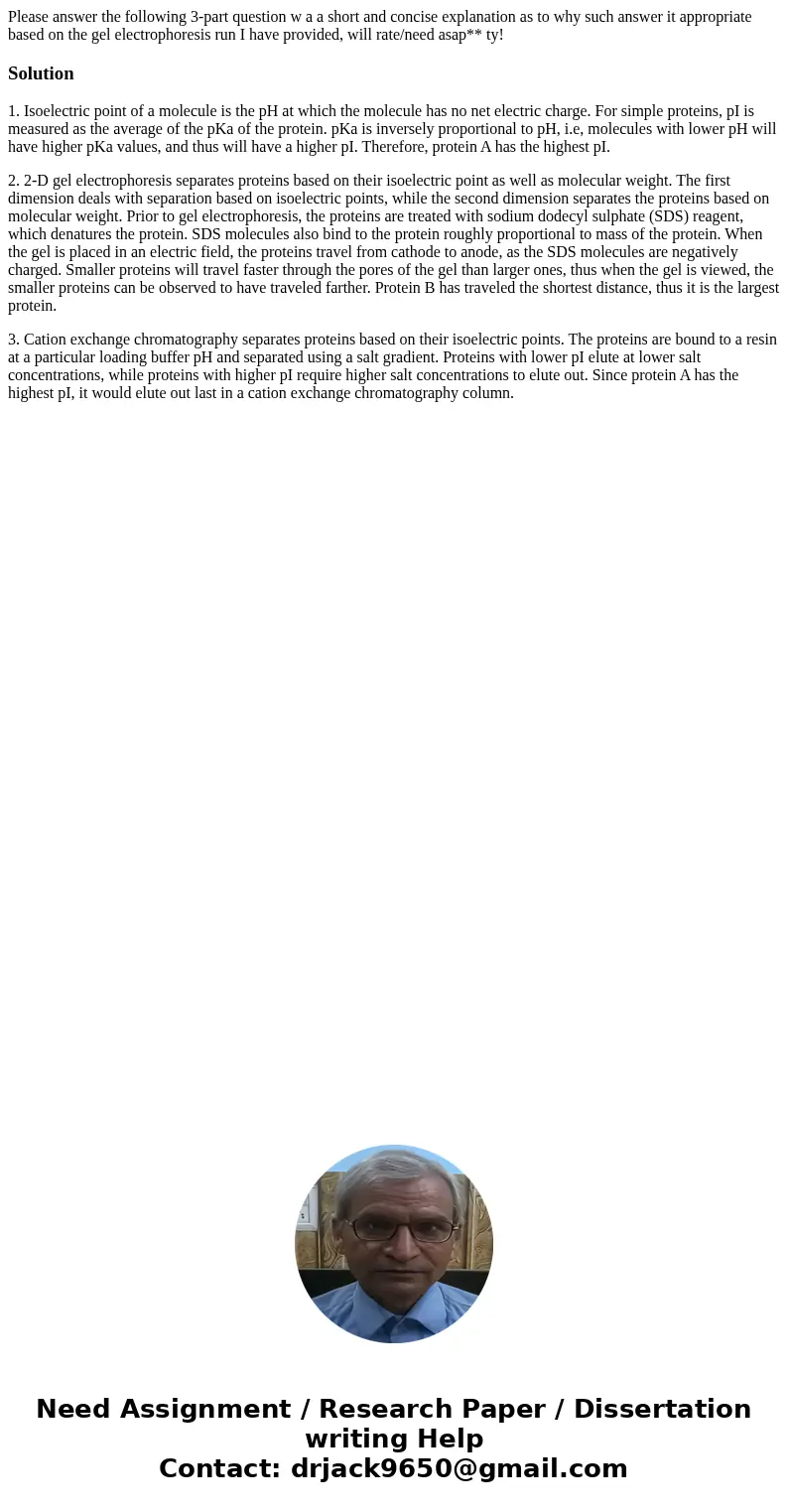Please answer the following 3part question w a a short and c
Please answer the following 3-part question w a a short and concise explanation as to why such answer it appropriate based on the gel electrophoresis run I have provided, will rate/need asap** ty!
Solution
1. Isoelectric point of a molecule is the pH at which the molecule has no net electric charge. For simple proteins, pI is measured as the average of the pKa of the protein. pKa is inversely proportional to pH, i.e, molecules with lower pH will have higher pKa values, and thus will have a higher pI. Therefore, protein A has the highest pI.
2. 2-D gel electrophoresis separates proteins based on their isoelectric point as well as molecular weight. The first dimension deals with separation based on isoelectric points, while the second dimension separates the proteins based on molecular weight. Prior to gel electrophoresis, the proteins are treated with sodium dodecyl sulphate (SDS) reagent, which denatures the protein. SDS molecules also bind to the protein roughly proportional to mass of the protein. When the gel is placed in an electric field, the proteins travel from cathode to anode, as the SDS molecules are negatively charged. Smaller proteins will travel faster through the pores of the gel than larger ones, thus when the gel is viewed, the smaller proteins can be observed to have traveled farther. Protein B has traveled the shortest distance, thus it is the largest protein.
3. Cation exchange chromatography separates proteins based on their isoelectric points. The proteins are bound to a resin at a particular loading buffer pH and separated using a salt gradient. Proteins with lower pI elute at lower salt concentrations, while proteins with higher pI require higher salt concentrations to elute out. Since protein A has the highest pI, it would elute out last in a cation exchange chromatography column.

 Homework Sourse
Homework Sourse